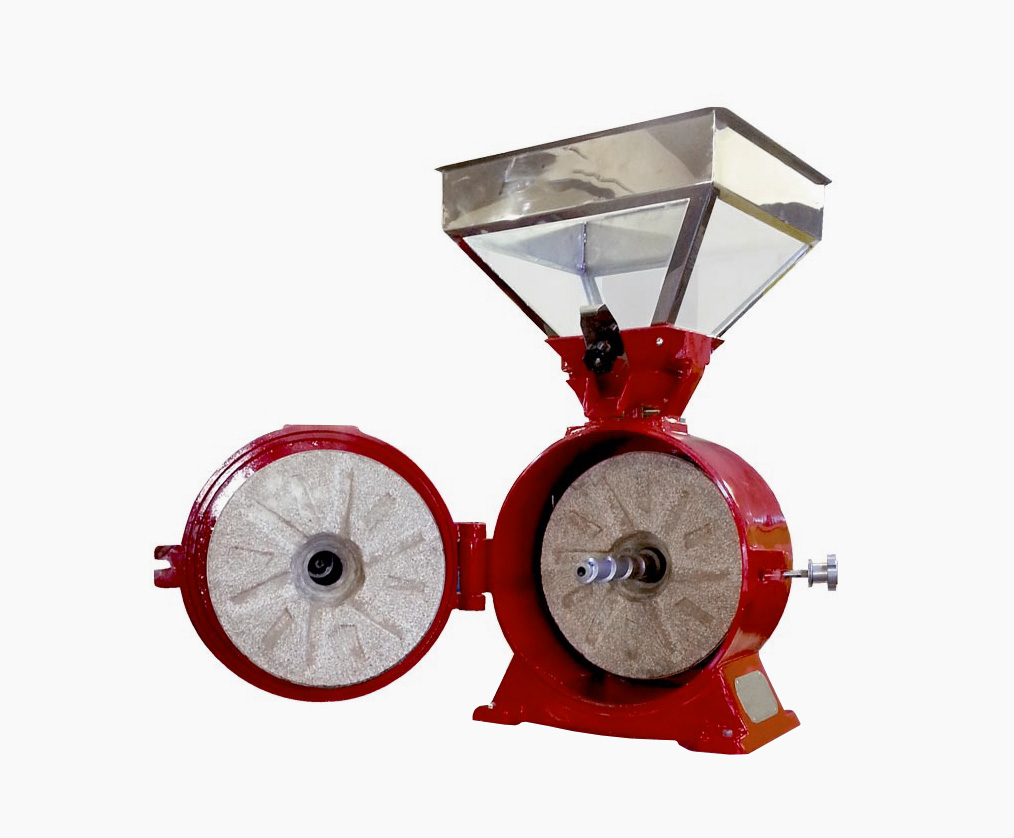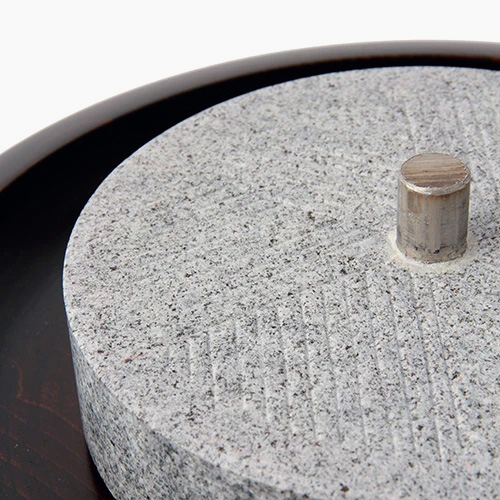 Picture: A traditional Turkish table-top stone grinder. Picture kindly supplied by Toper Roaster.
Picture: A traditional Turkish table-top stone grinder. Picture kindly supplied by Toper Roaster.
To better understand the tradition of grinding as fine as possible for Turkish, Greek, and Arabic coffees, we spoke to Professor Steven Abbott, a world expert on the science of foams.
Many of the traditional coffee grinders found in supermarkets and coffee shops of the Eastern Mediteranean are similar in stature and shape to the well-known EK43 grinder. In lieu of steel burrs, however, many of them are fitted with stone grinding discs featuring a very wide diameter, 15–20 centimetres. This allows them to grind superfine, similar to the way the granite rollers of a chocolate conche allow chocolate makers to grind cocoa solids to a mean particles size distribution below 20 microns.
A similar ultrafine grind is sought by the millers who use granite stone mills to turn green tea into matcha powder. Matcha mills typically rotate extremely slowly, at around 30 rpm. A faster rpm leads to a larger particle size when stone milling — and with matcha, as with chocolate, ‘the finer the grind, the better’.
Pictures: A small matcha stone mill.
This has not been our experience with coffee, though. We preferred the taste of a brew produced with a slightly coarser grind. If flavour is not improved by grinding coffee ultrafine, we wondered, why is fine-grinding the norm?
Professor Abbott suggested that we first identify the source of the majority of a cezve’s bubbles. Do they form from the steam as the water in the bottom of the cezve boils, or do they derive from gas dissolved in the water and the coffee?
We prepared some cezve brews with water we had boiled and then cooled. This process degassed the water, and it allowed us to ensure dissolved gases weren’t a contributor to the formation of raghweh. This approach made no significant change in raghweh.

